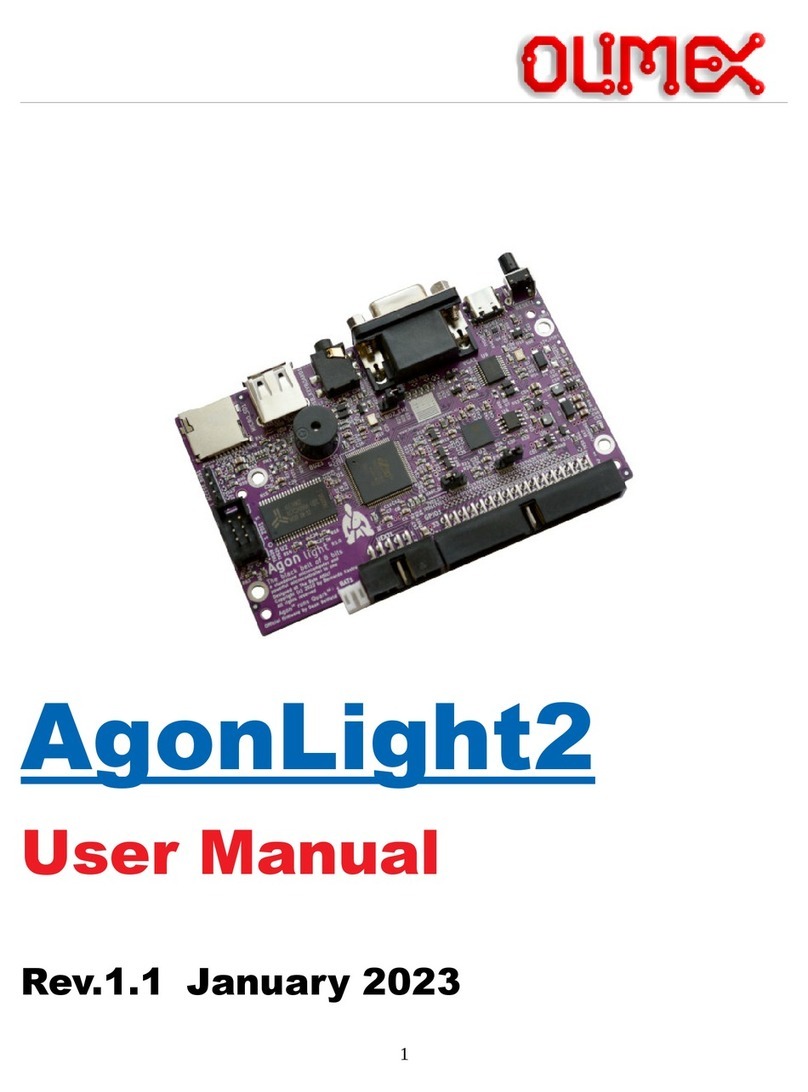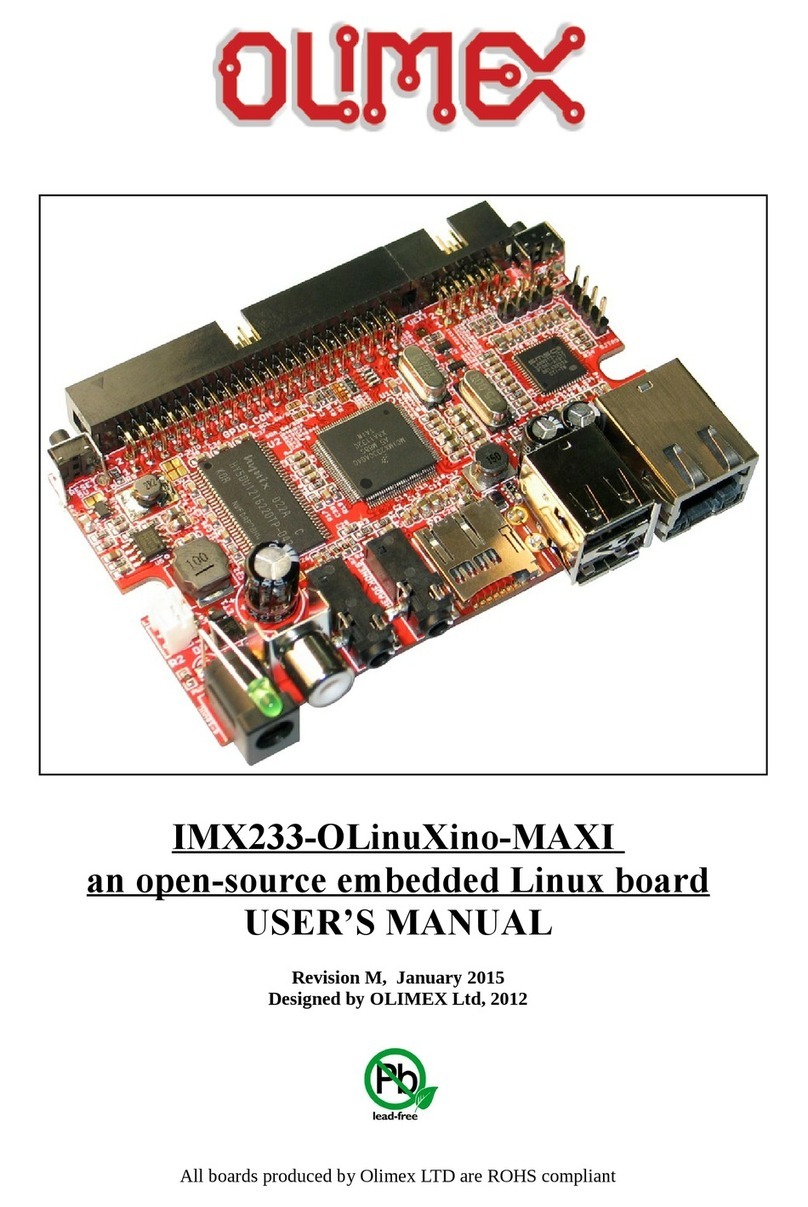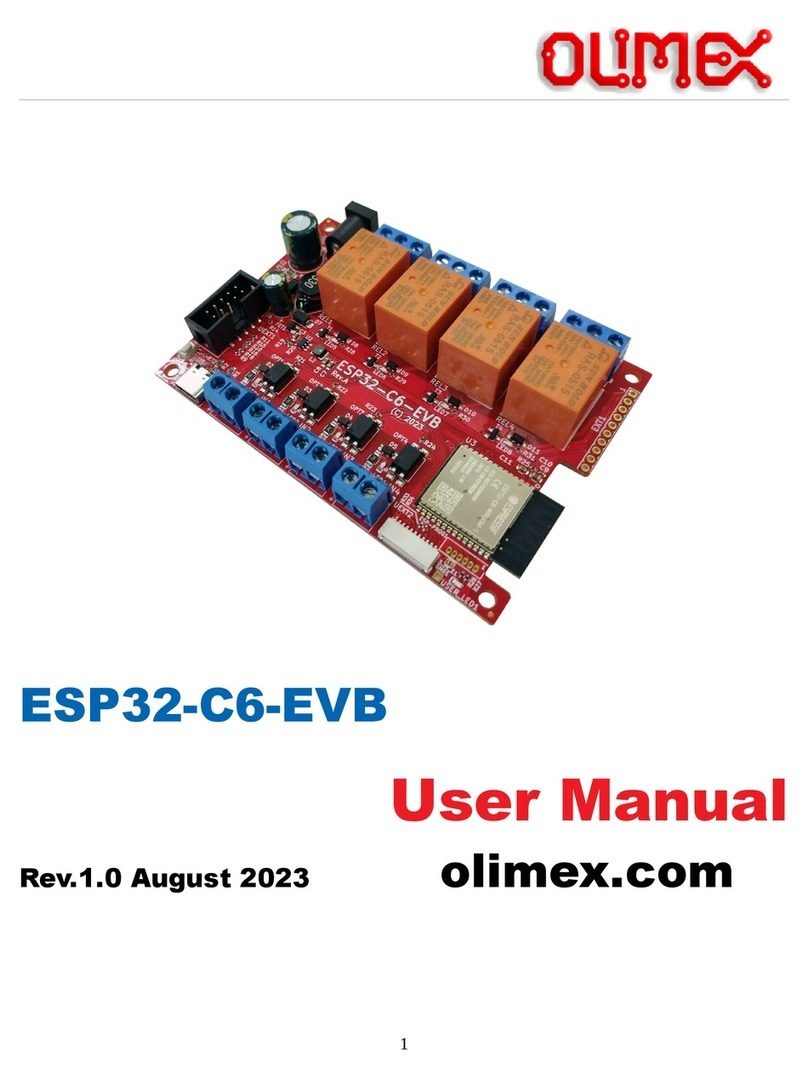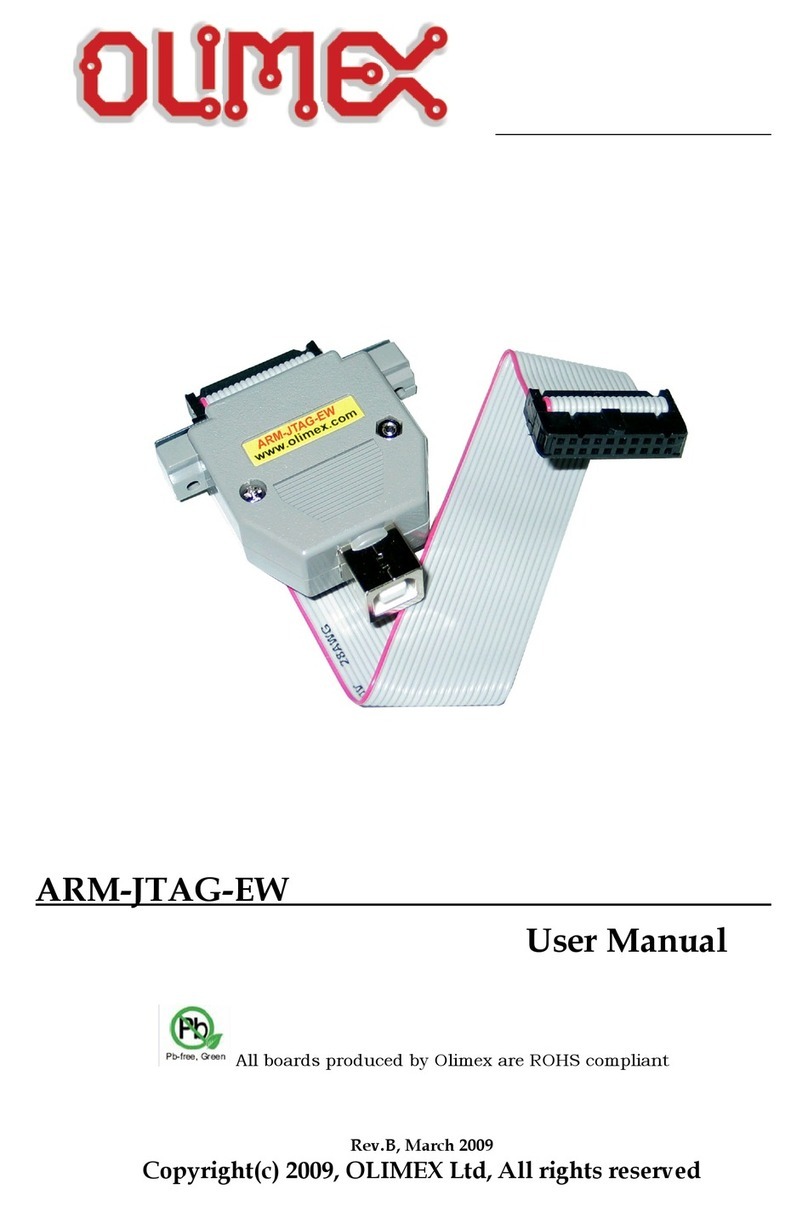
3. HARDWARE
3.1. POWER Supply
3.1.1. DuinoMite-Mega
DuinoMite-Mega can be powered by four different sources:
- POWER JACK with a 2.1 mm internal pin and 6 mm outer diameter, the inner pin is positive,
the voltage that the DuinoMite-Mega accepts on this connector is in range 9-30V DC, note that there
is a DC / DC power supply implemented, so the power consumption of this board is the same no matter
what the input voltage is, other similar boards we have seen use linear voltage regulators heat up when
a higher voltage is applied and wastes energy. There is a reverse voltage protection diode on this
connector, to protect against reverse polarity.
- USB power supply, when DuinoMite-Mega is connected via a US cable to a US host it will
take its 5V power supply from the US host source to power the board, note that depending on what
frequency the DuinoMite-Mega runs at, it may consume up to 140mA, so the US port needs to be able
to provide this current, some US ports are set to 100mA maximum current supply and may be not able
to power the DuinoMite-Mega.
- Lithium-Polimer battery, DuinoMite-Mega hardware is build to be very power efficient. In
Low Power mode DuinoMite-Mega consumes only 30uA (plus current draw from the I/O pins) while
the RTC low frequency clock is running, so this allows handheld and battery powered devices to be
built with the DuinoMite.
- VIN port on the Arduino platform Connector 1. Note that on this connector there is NO reverse
protection diode, so you should make sure 9-30V DC is applied to this port.
DuinoMite-Mega could be powered by more than one power source at the same time, for instance
POWER JACK and US at same time. The different power sources have different priorities, this
means when two or more power sources are available at the same time only one of them is used.
The priority is the POWER JACK and VIN, if the power supply is applied to any of these two
connectors, the power is sourced from them and not from the US and/or the battery, second priority is
US , if there is no power applied to POWER JACK or VIN and US is active then the power will be
taken from the US . The battery power supply is with lowest priority and board will take power from it
only if there is no power supply to any of the other sources.
DuinoMite-Mega has a built in LiPo battery charger, so once it senses power on POWER JACK, US
or VIN it will charge the LiPo battery (If present) until the battery is charged to 100%.
The switching between the different power supplies is done automatically and glitch free with no need
to change jumpers. oard power is not lost during voltage source switching.





































